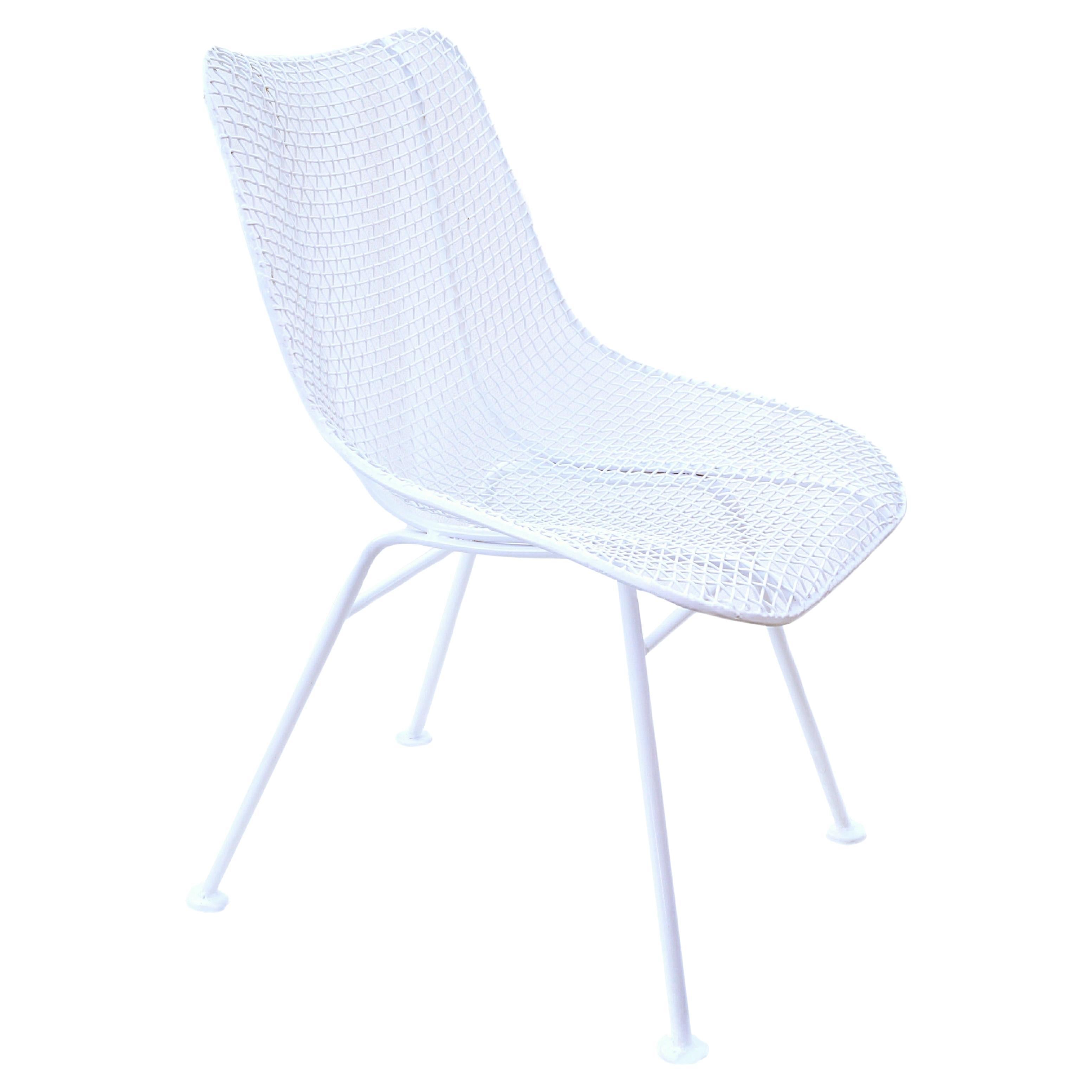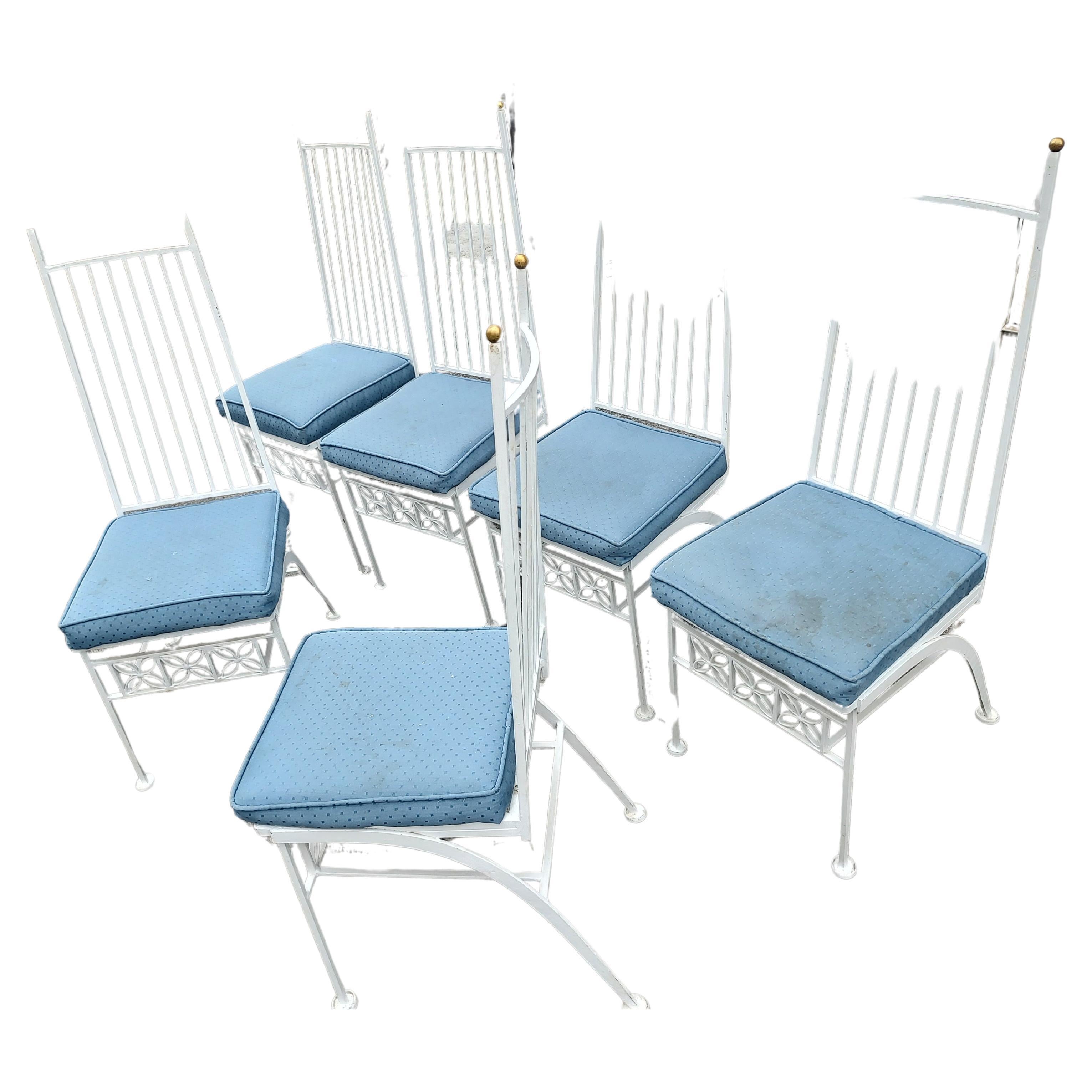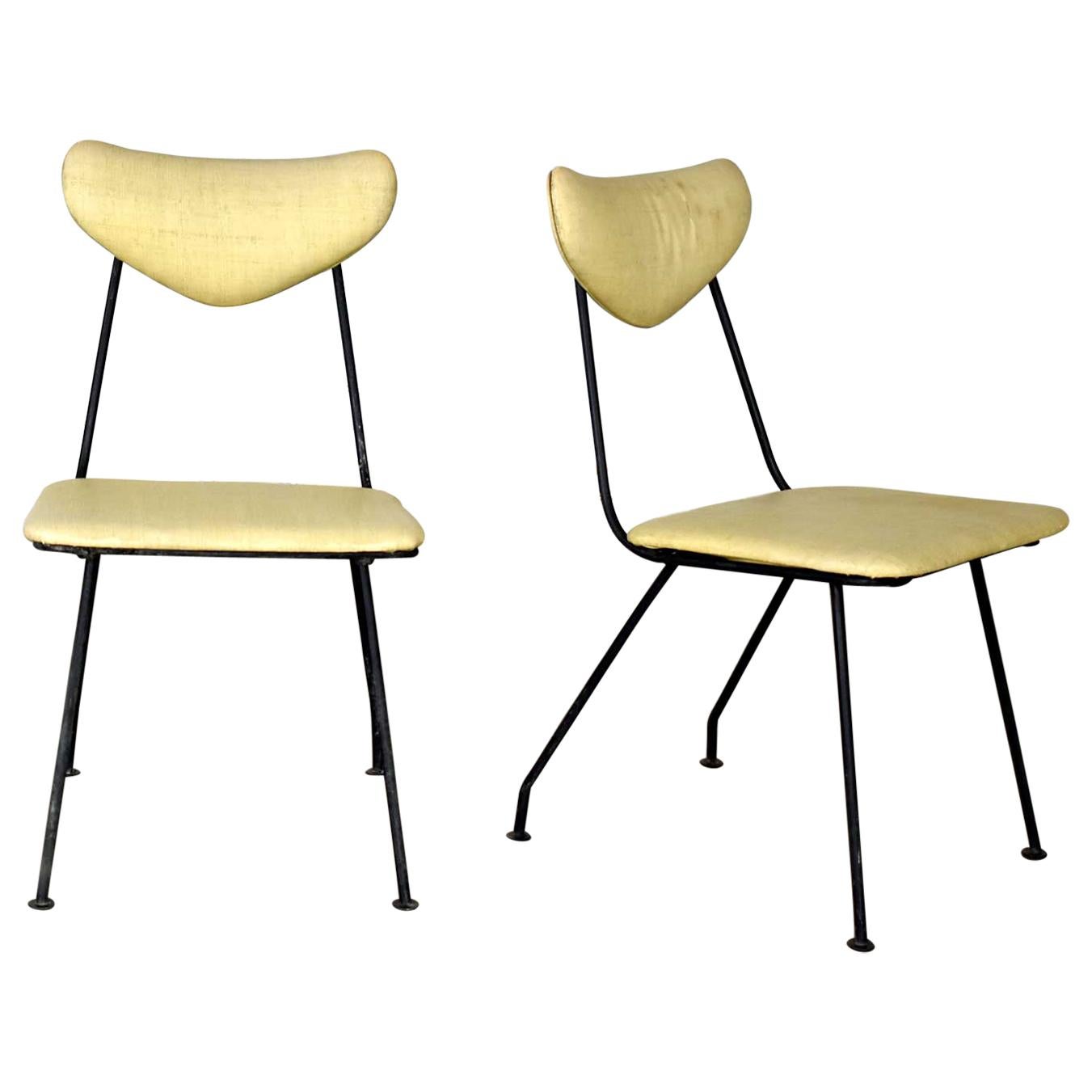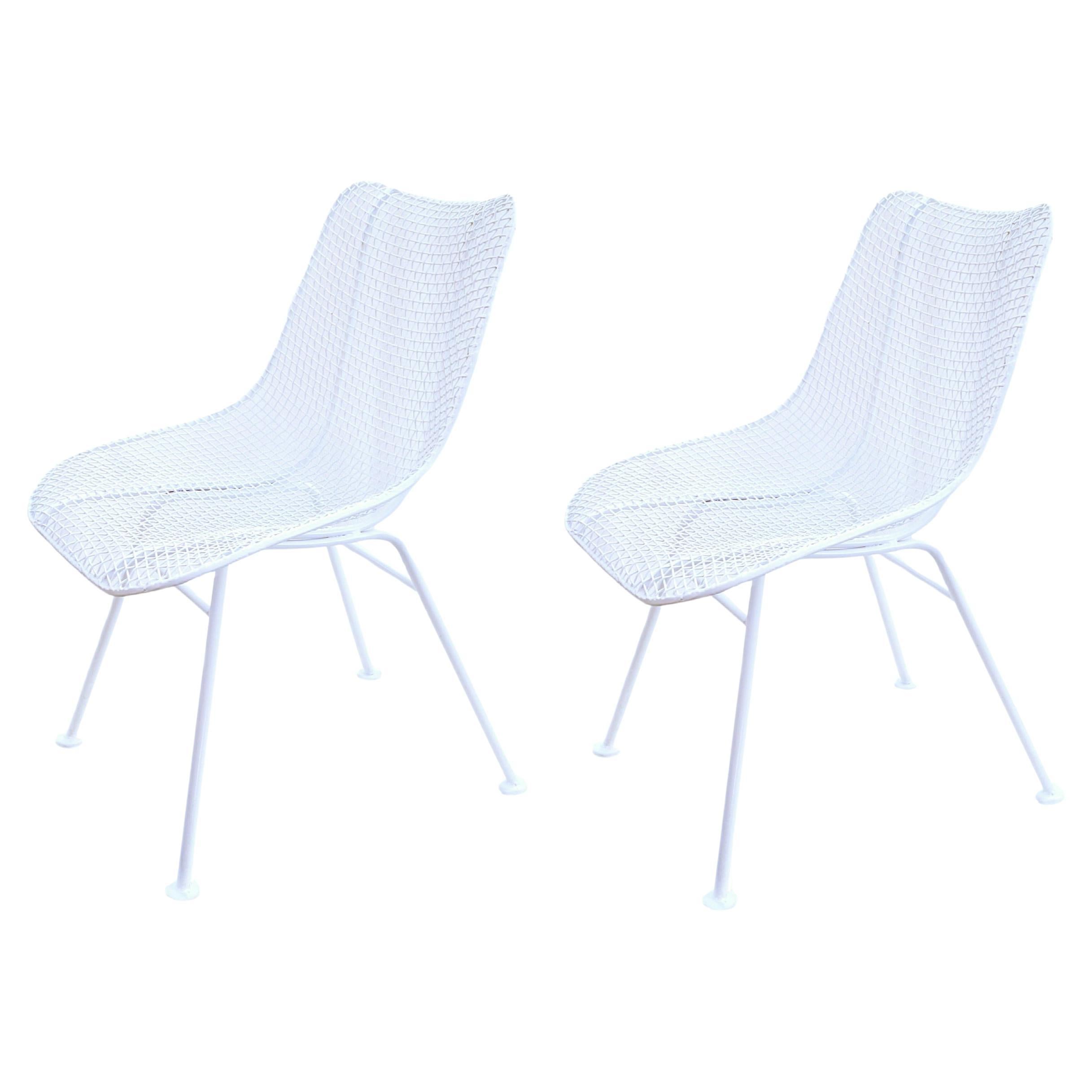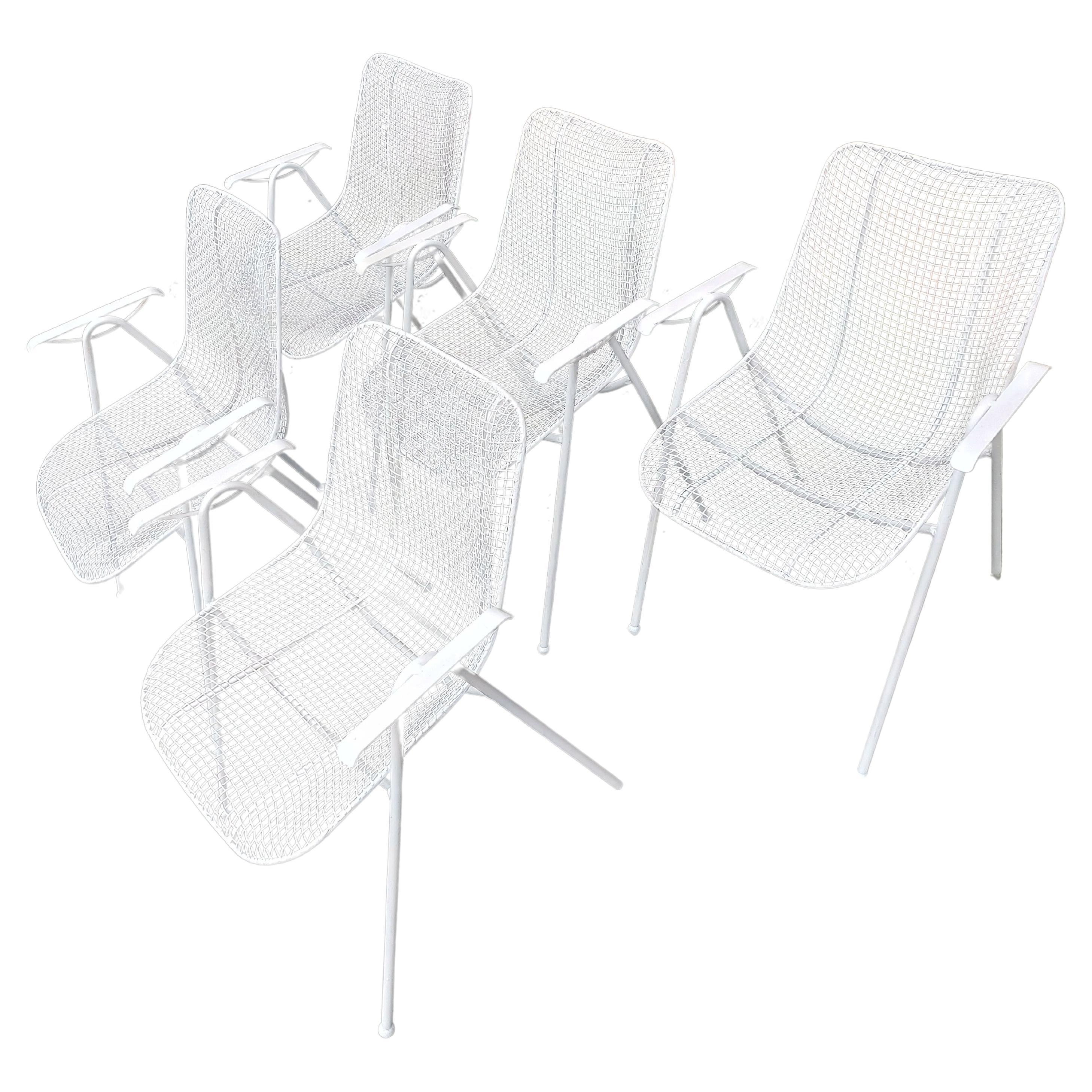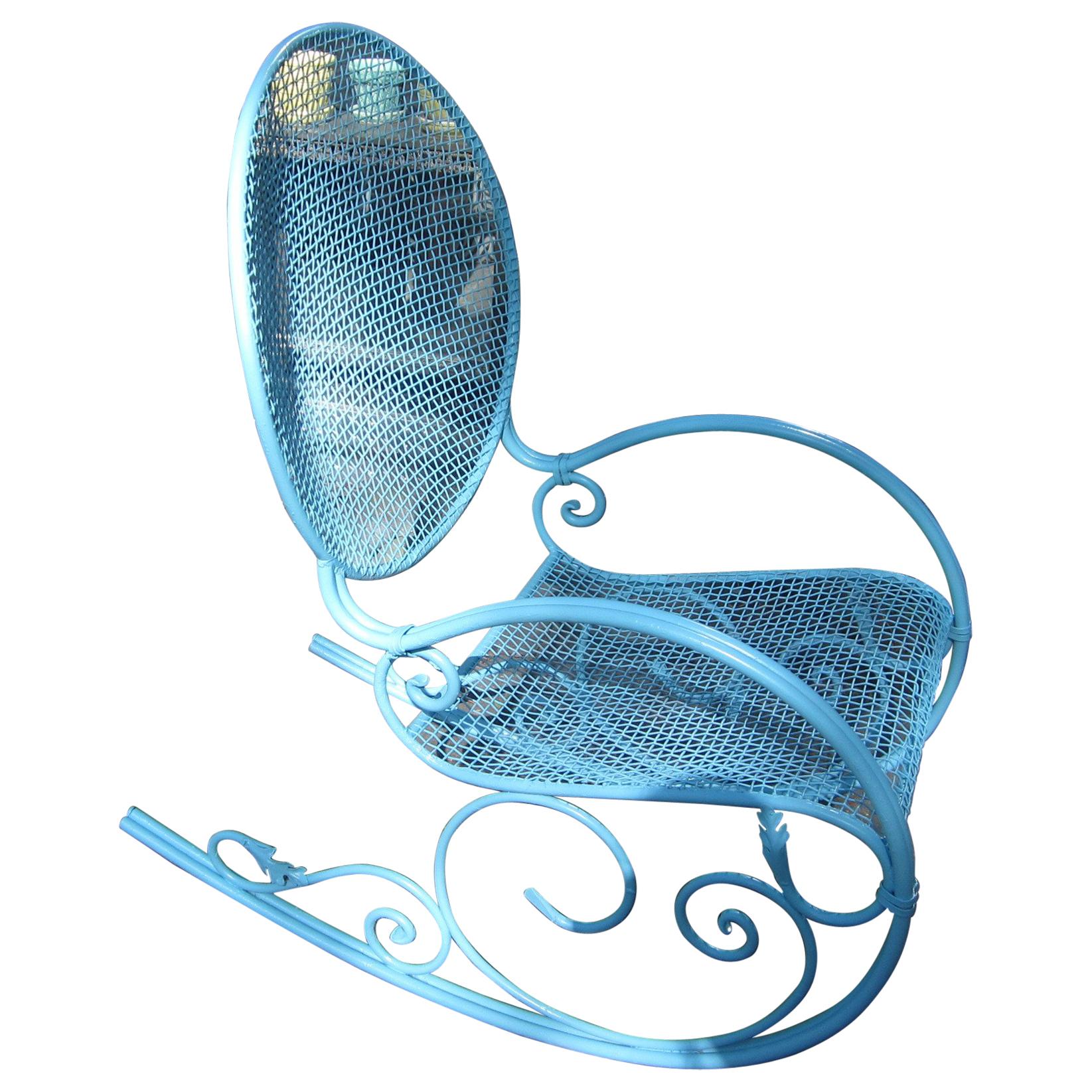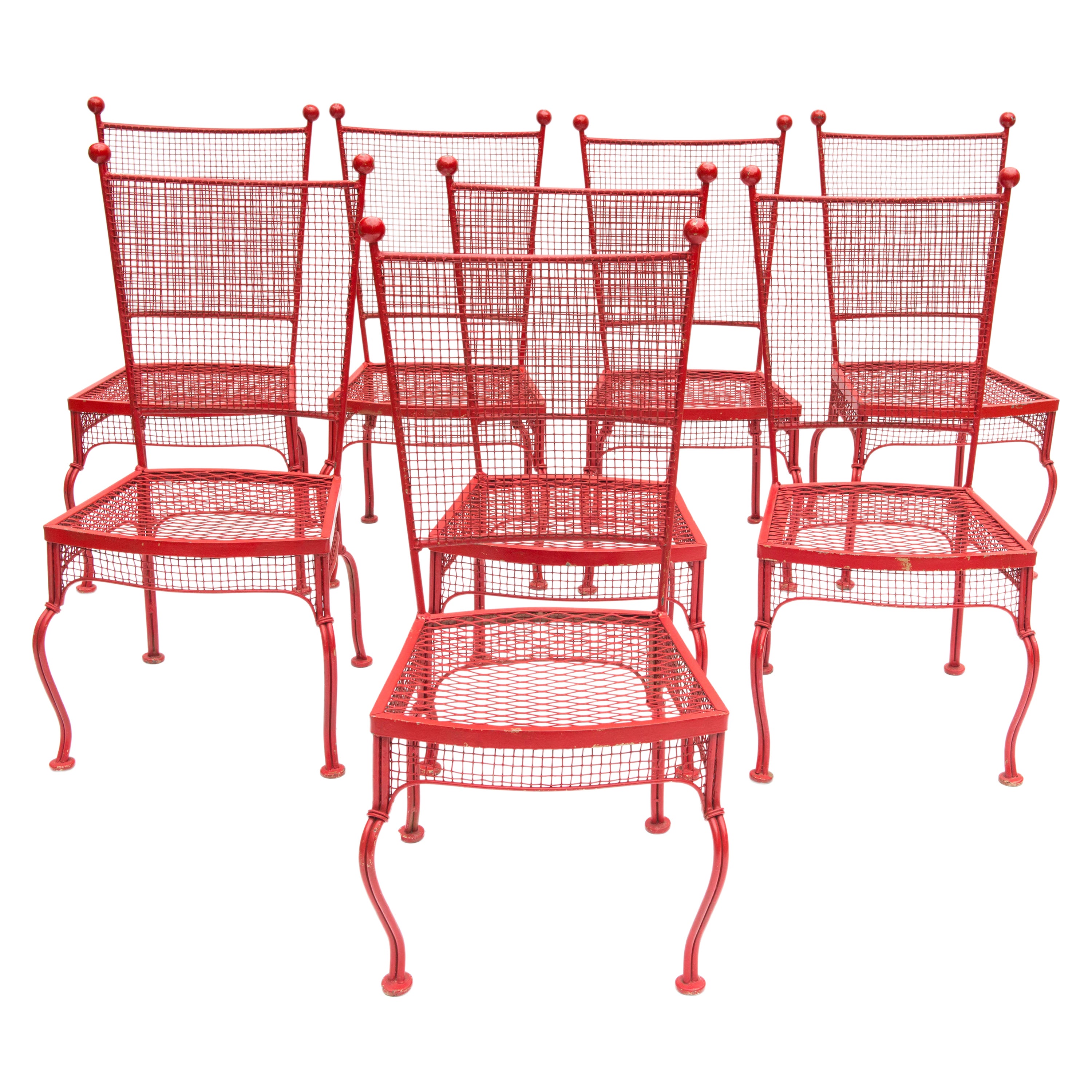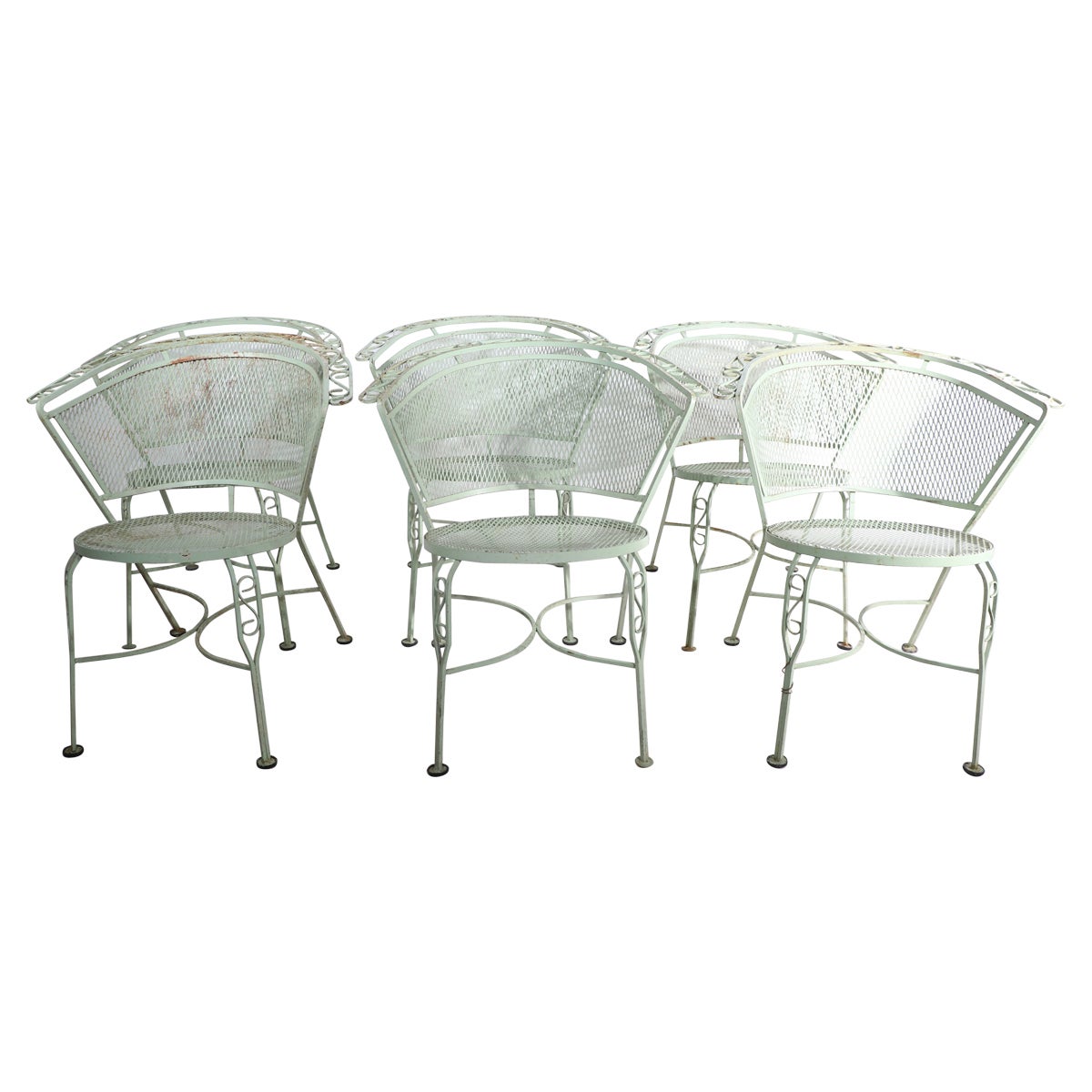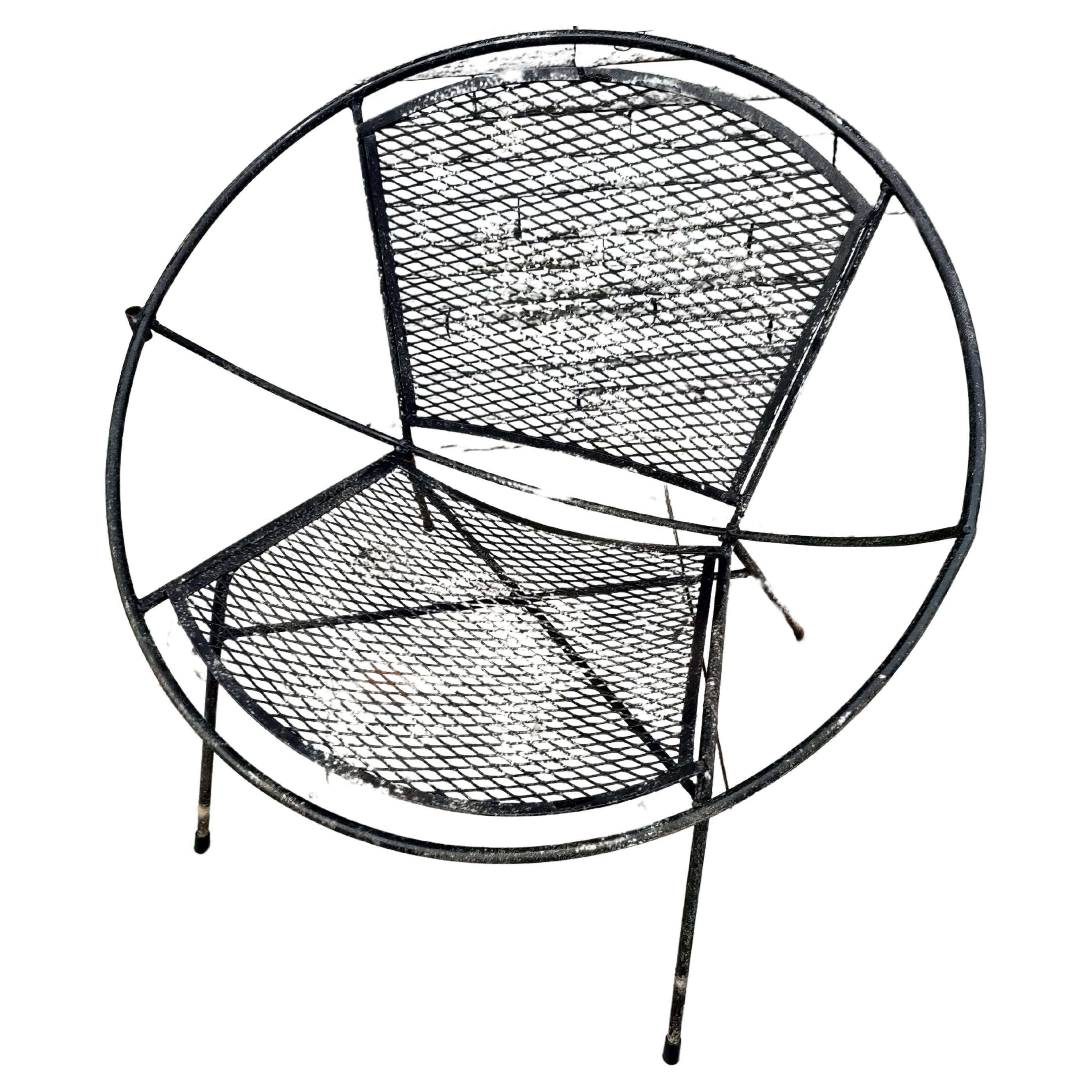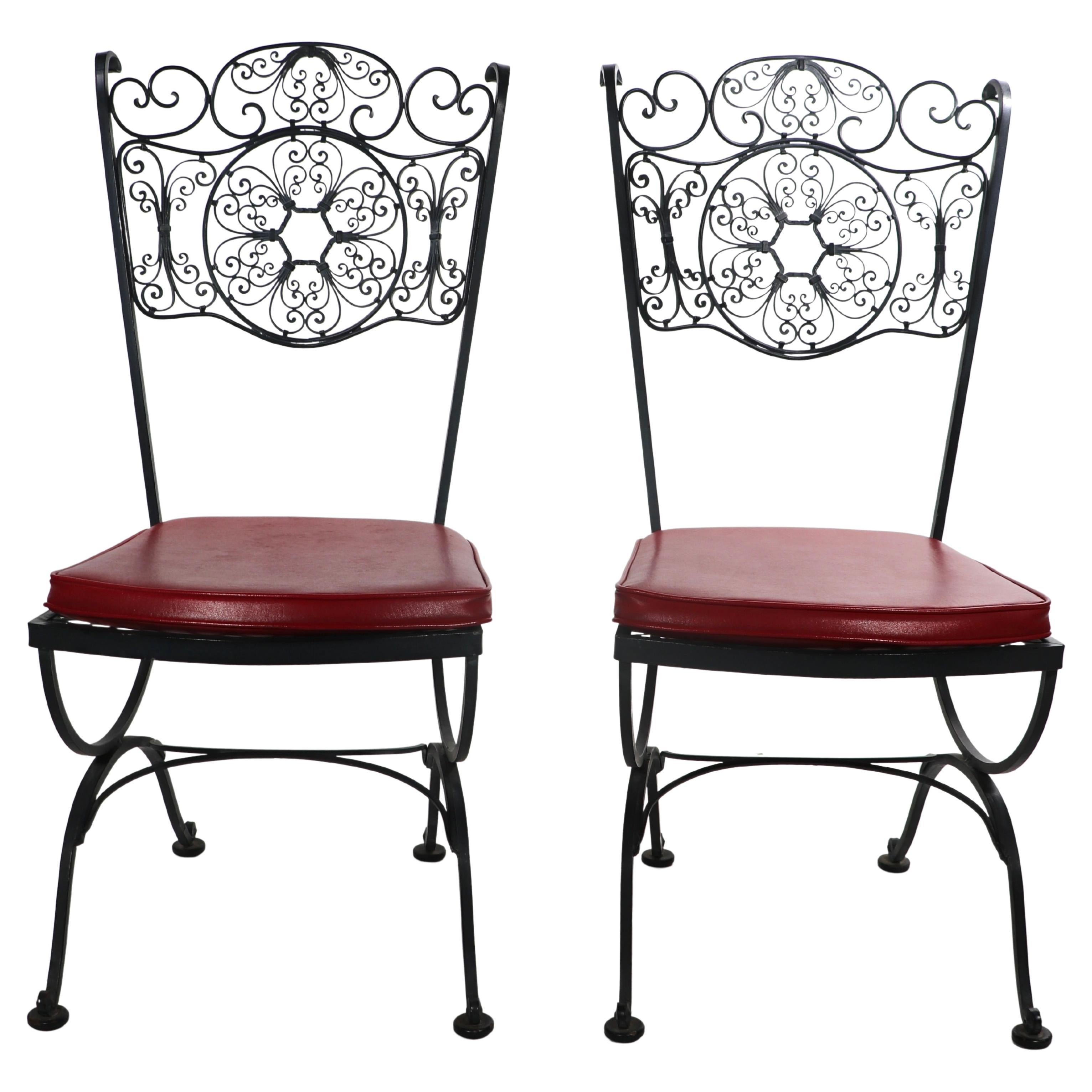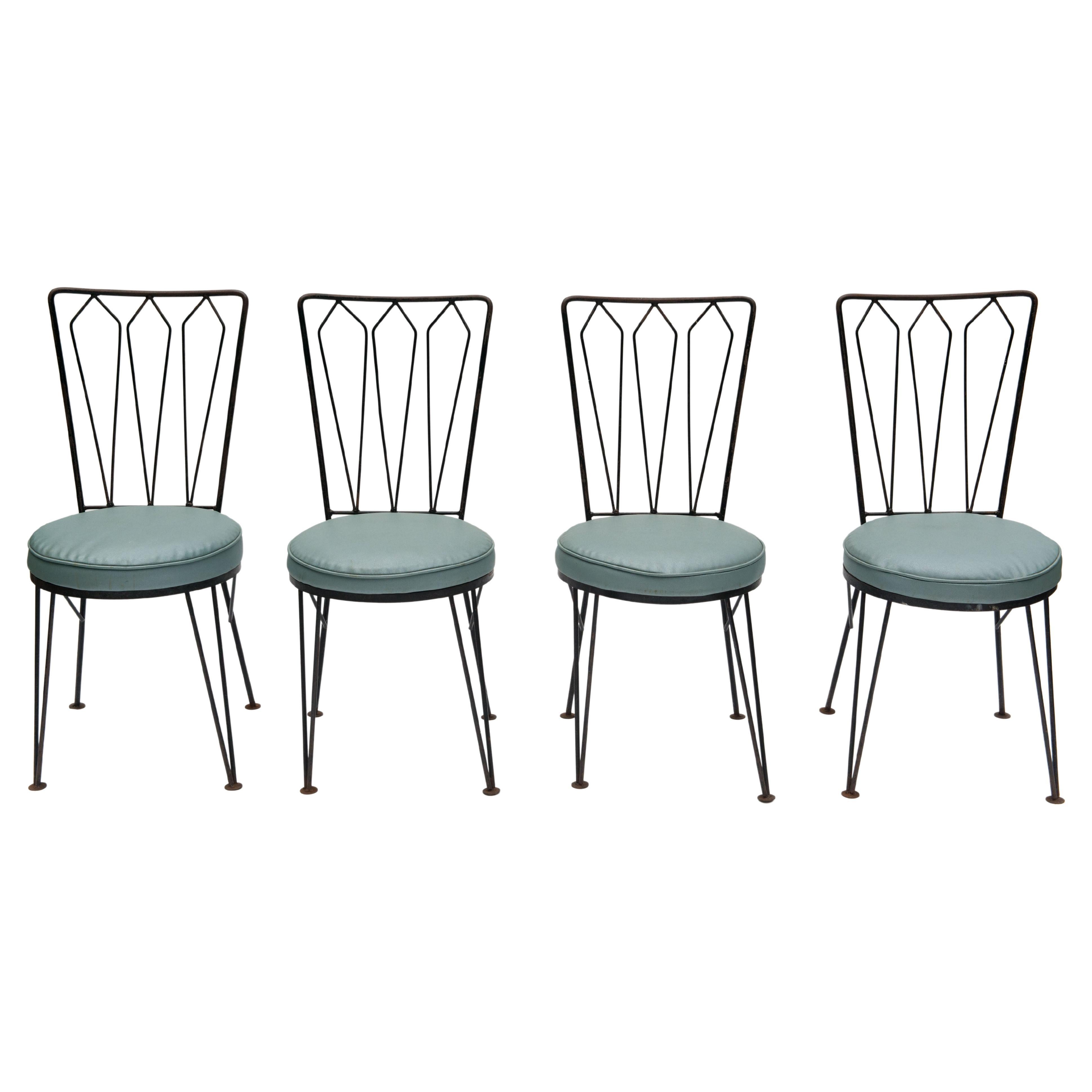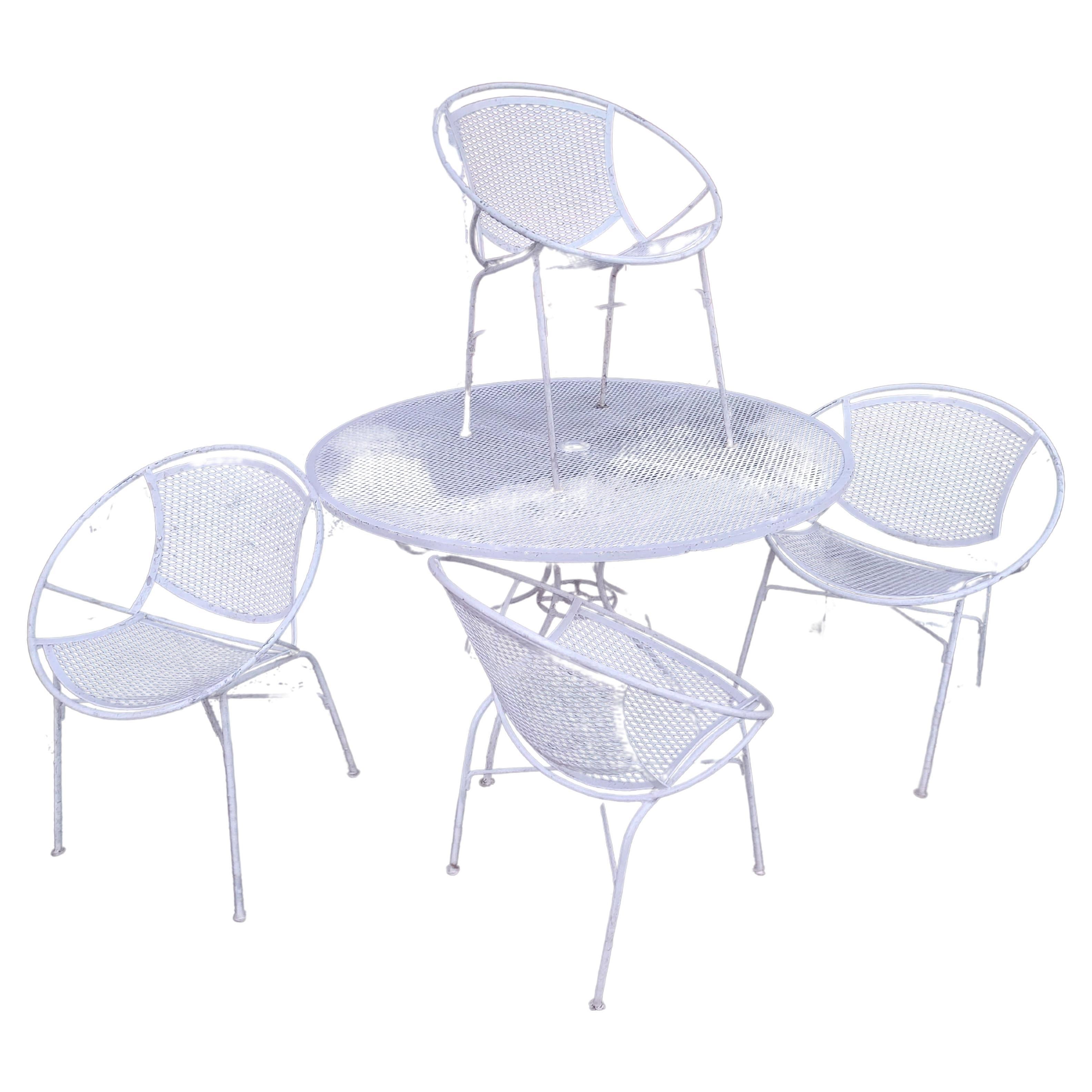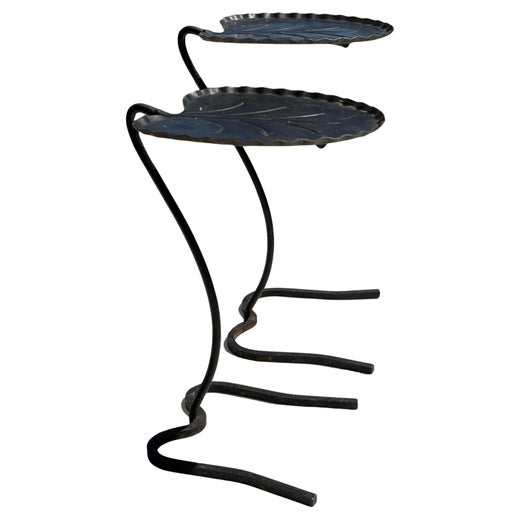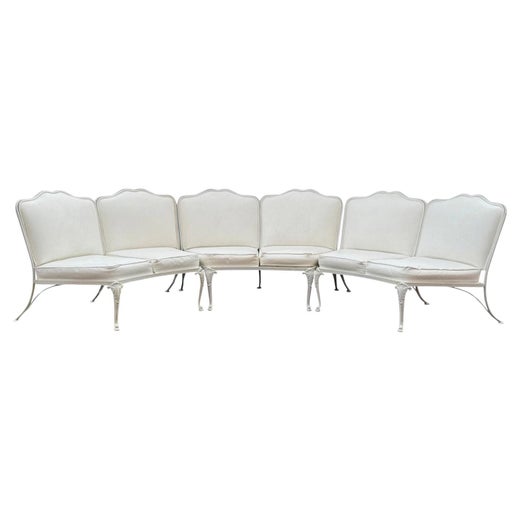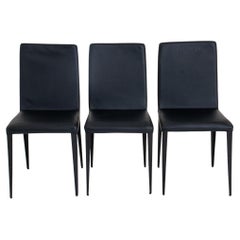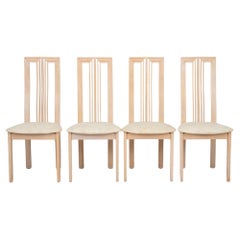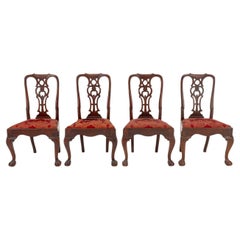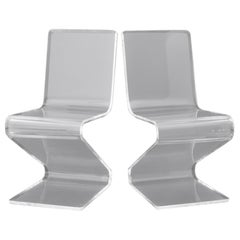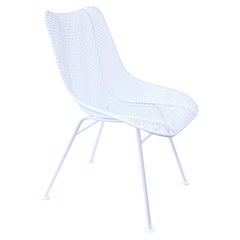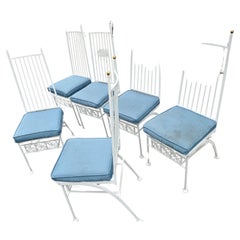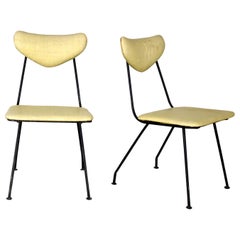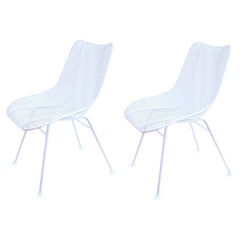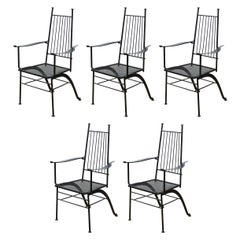
John Salterini For Woodard Mid-Century Modern Iron Patio Chairs
View Similar Items
John Salterini For Woodard Mid-Century Modern Iron Patio Chairs
About the Item
- Creator:John Salterini (Designer),Russell Woodard (Manufacturer)
- Dimensions:Height: 41.5 in (105.41 cm)Width: 25.5 in (64.77 cm)Depth: 22 in (55.88 cm)Seat Height: 17 in (43.18 cm)
- Sold As:Set of 5
- Style:Mid-Century Modern (Of the Period)
- Materials and Techniques:
- Place of Origin:
- Period:
- Date of Manufacture:Mid-20th Century
- Condition:Wear consistent with age and use.
- Seller Location:Astoria, NY
- Reference Number:Seller: S138XX - 70431 - 11201stDibs: LU889321323152
John Salterini
While John B. Salterini designed ornate wrought-iron garden furniture for patios and lawns, he specifically sought to match the forms of indoor furniture and also advocated the use of his furniture indoors “because it brings into your home the freshness and gaiety of a flowery summer garden” (per his print advertisements).
After emigrating from Italy to New York, Salterini worked in journalism at first, editing a newspaper in Syracuse. When he moved to New York City, he worked in glass manufacturing and then entered into the production of wrought-iron furniture as a partner in Salterini & Gallo. When that company shuttered, he launched his own eponymous firm in 1934, eventually offering some of the most exquisite, high-end outdoor furniture of the mid-century period.
Over the course of his career, Salterini designed a wide range of furniture, from tables and chairs to chaise longues, ottomans and benches. And his influences were equally wide as well. His work is often identified as mid-century modern — the Clamshell line, designed for Salterini’s company by like-minded Italian architect and industrial designer Maurizio Tempestini, boasts soft curves and cocoon-like shells that strike a sharp contrast with the solidity of wrought iron and resemble the zany chair designs emerging during the postwar period from designers like Pierre Paulin and Arne Jacobsen.
The furniture from John B. Salterini Company also combined organic and geometric forms, one of the mid-century design movement’s defining features. But Salterini was equally influenced by the Gothic Revival and Art Deco movements, incorporating their signature flourishes like intricate lace-like patterns, delicate vine leaves and protruding scrolls into his French Provincial Group’s glass-topped tables and chairs. One of his most ornate and ostentatious designs is the Peacock double chaise longue, with its elaborate spokes and arching back.
The postwar boom in prosperity and leisure time led to the expansion of the home to include patios, which needed to be furnished with stylish outdoor furniture.
Wrought iron was considered the best material for outdoor use because of its comparative lightness and pliability to other metals. The term “wrought” means made by hand, as opposed to “cast” iron, which was made using molds. Salterini’s high-end handcrafted furniture, with names like Park Avenue Group — promoted for indoor use and photographed as such for the firm’s catalogues — attracted wealthy buyers from across the country. They were drawn to his ability to make a metal like wrought iron look almost ethereal and elegant, and the way he incorporated the popular styles and design principles of the day into his pieces. That Salterini’s garden furniture can be used indoors and look completely natural is a rare feat.
Find vintage John B. Salterini outdoor furniture on 1stDibs.
Russell Woodard
Woodard Furniture Company’s diverse offerings have included everything from pine caskets to premium patio and garden furniture over the years.
Lyman E. Woodward founded the family business Woodard Brothers (he dropped the second w for his venture’s name), later Woodard Furniture Co., in Owosso, Michigan, in 1866. Woodard Furniture produced wood furniture such as birch and oak bedroom pieces, window and door blinds and even pine caskets. Demand for the latter increased during the spread of the Spanish flu in America, and Woodard’s casket business — a new company called Owosso Casket Company — thrived, becoming the largest casket manufacturer in the world throughout the 1920s. Two U.S. presidents, William McKinley and Benjamin Harrison, were buried in Owosso caskets.
On the furniture side, Lyman’s son Lee Woodard spun off his own business as Lee L. Woodard and Sons, opening a shop with his sons, Joseph, Lyman II and Russell Woodard. During the 1930s, the new company explored the use of metal in furniture-making and introduced a wrought-iron set of patio dining furniture featuring ornate grillwork inspired by French design called Orleans in 1940. The line became a best seller and kick-started the company’s international reputation as a patio-furniture maker, even as the Woodard factory subsequently shifted toward supporting the wartime efforts in manufacturing parts for trucks and military equipment. After World War II, the business returned to making furniture. Over the years, Woodard and Sons would go on to master metallurgy in furniture making, developing expertise in wrought iron, cast aluminum and tubular aluminum for both indoor and outdoor pieces. In colder regions, wrought iron, which can be left outdoors all year round, was the material of choice in outdoor furniture designs for the Atomic Age, and vintage Woodard outdoor furniture is widely coveted by collectors today.
While the business started with more traditional styles of furnishings, the company would go on to embrace mid-century modernism. In fact, one of Woodard’s most famous pieces is 1956’s Sculptura chair, variously credited over the years to Russell and/or Joseph. The Sculptura was reportedly the first sculpted chair made without molds. Not unlike Harry Bertoia’s elegant steel-wire Side chair (also a mid-century darling) in its undulating form, the Sculptura chair, which is composed entirely of enameled woven wrought-iron wire, bears similarity to Eero Saarinen’s Womb chair for Knoll and Charles and Ray Eames’s DAX chair. The beloved Woodard chair was added to the Cooper Hewitt Smithsonian Design Museum’s permanent collection in 1994.
While the Woodard business is no longer in family hands, the company continues to produce fine patio furniture today and even reintroduced the Sculptura chair in 2015 as nostalgia for mid-century modernism gained steam again.
On 1stDibs, find vintage Russell Woodard lounge chairs, dining chairs and patio furniture today.
More From This Seller
View AllMid-20th Century Modern Dining Room Chairs
Leather
20th Century American Dining Room Chairs
Upholstery, Wood
Antique 18th Century European Dining Room Chairs
Silk, Mahogany
20th Century Mid-Century Modern Side Chairs
Lucite
20th Century Biedermeier Dining Room Chairs
Upholstery, Birch
20th Century Italian Regency Dining Room Chairs
Upholstery, Cane, Wood
You May Also Like
Vintage 1950s American Mid-Century Modern Patio and Garden Furniture
Wrought Iron
Vintage 1950s American Mid-Century Modern Patio and Garden Furniture
Iron
Mid-20th Century American Mid-Century Modern Dining Room Chairs
Wrought Iron
Vintage 1950s American Mid-Century Modern Patio and Garden Furniture
Wrought Iron
Vintage 1950s American Mid-Century Modern Patio and Garden Furniture
Steel, Iron
Vintage 1960s American Mid-Century Modern Rocking Chairs
Iron
